Jonathan Ross Gilbert, Ph.D.

-Jonathan Ross Gilbert, Ph.D., Chapter 10 Author

INTRODUCTION
An email alert indicates that a long-awaited package has arrived. “Delivered: Your Amazon.com order of #112-4172009-2425109.” The convenience of online shopping can sometimes make it feel like your packages magically appear, but have you ever wondered how the product actually got to you?
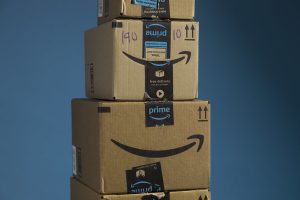
WHAT IS A DISTRIBUTION (MARKETING) CHANNEL?
A distribution channel refers to “a set of interdependent organizations involved in the process of making a product or service available for use or consumption” (Palmatier et al. 2014, p. 3) by an end user. In plain English, the paths that products and services take on their way from the manufacturer or service provider to the end customer.
It’s important to keep in mind that the customer (e.g., individual or business) that selects and purchases a good or service may not be the end user that ultimately uses or consumes it. You may also hear business professionals use the term marketing channel; “distribution channel” and “marketing channel” mean the same thing.
Interestingly, there are two critical determinants as to whether a business can successfully sell a product and/or service to its end customer:
(1) a solution to one or more business problems; and
(2) a viable distribution channel or network of intermediaries.
Believe it or not, the distribution channel may be more valuable than the solution itself (Thiel 2014). Distribution, at its best, adds value to a product or service by ensuring delivery when the customer demands or needs it, in locations that are easily accessible to the customer, and in the right condition that customers can use it. In economics, these three sources of customer satisfaction are known as time utility, place utility, and form utility. Implicit in successful delivery is possession utility (ability to use the product or service). A strong distribution channel can also support growth by allowing companies to reach new markets, increase visibility and brand awareness, and target specific customer segments (Bellin 2016).
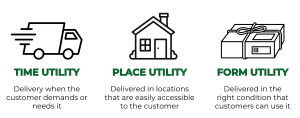
SUPPLY CHAINS AND DISTRIBUTION CHANNELS
Distribution channels are an important part of, but should not be confused with, supply chains. A supply chain is “a set of three or more entities (organizations or individuals) directly involved in [both] the upstream and downstream flows of products, services, finances, and/or information from a source to a customer” (Mentzer et al. 2001, p. 4; see Fig. TBD). In plain English, the paths that raw materials, components, and goods take before their assembly and sale to end customers (McKinsey 2022). The supply chain is the entire journey!
The upstream flow may include steps such as sourcing raw materials, having a logistics provider take raw materials to a supplier to batch or convert the raw materials into semi-finished or finished goods, and then moving batches of raw materials or converted goods to production.
The Upstream Flow

The downstream flow may include steps such as packaging the finished products, transporting the finished products to a distribution center or retail store, and then fulfilling orders by delivering the finished products to the end customer.
The Downstream Flow

Procurement, logistics, and supply chain management are some of the fastest growing fields. Refer to the Association for Supply Chain Management (2024) for a description of careers and certifications: https://www.ascm.org/membership-community/career-resources/supply-chain-management-careers/).
ELEMENTS OF A DISTRIBUTION CHANNEL
In effect a distribution channel can be analogized to a chain in which each of the interdependent organizations (or “intermediaries”) involved in the process of making a product or service available is like a link in the chain, and that each of these links is equally important in the overall success of ensuring use or consumption. And if one of those chain links is broken, problems arise.
So, you should be asking yourself, what are those all-important links in the distribution channel? Let’s take a look, keeping in mind that sometimes, in practice, business professionals have different terms for the same thing.
The most common types of intermediaries in a distribution channel are: producers; wholesalers; retailers; and end customers (Gadde 2014).
- Producers. Producers are manufacturers or service providers that combine labor and capital to create goods and services for customers.
- Wholesalers. Wholesalers buy goods in large quantities and resell them to retailers and other businesses. It is not uncommon for these resellers to add value to these products by incorporating additional features or services that are tailored to the specific needs of end customers. For example, TBP Converting (www.tbpconverting.com) resells bonding and adhesive materials from manufacturers like 3M and Dow. However, their end customers typically need those products converted into different sizes and shapes for very specific applications.
- Retailers. Retailers purchase a variety of goods from either producers or wholesalers and then sell those goods, in smaller quantities, directly to the end customer.
- End Customer. End customers are the final purchasers of goods and services. These buyers can either be consumers (people) or businesses (organizations).

Agents and brokers are an additional form of intermediary that are most common in distribution channels within the service industries. These distributors never take possession of the goods or services but earn monetary commissions or fees for facilitating sales between producers and end customers. For example, stockbrokers are individuals who buy and sell stocks of companies (producers) for retail (consumers) and institutional (business) investors in return for a commission.
PRODUCT “PUSH” VS. DEMAND “PULL” STRATEGIES IN THE DISTRIBUTION CHANNEL
The push-pull model (Pyke & Cohen 1990) is a famous, albeit oversimplified, depiction of two different strategic approaches to managing the flow of goods and services in the distribution channel. Theories, models, and frameworks are tools that businesses use to plan and implement the best course of action in a marketplace.
A push strategy focuses on forecast-driven planning where demand for goods and services are anticipated and produced in advance to meet that demand (Ng & Chung 2008).
A pull strategy focuses on producing goods and services in direct response to current orders which reflect actual demand (Ng & Chung 2008).
These two strategies are not always obvious to the average observer. Take, for example, e-commerce giant Amazon. Its founder and former CEO, Jeff Bezos, stated that he plans to give away most of his now $200 billion fortune to help others (CNN 2022). Is Amazon employing a push or pull strategy? The answer may surprise you.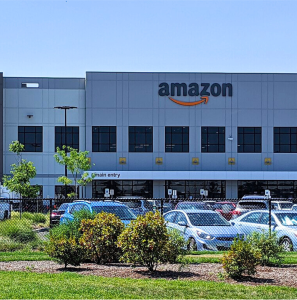
Amazon is intentional about where it places its warehouses. These state-of-the-art facilities are situated closer to main metropolitan areas and city centers to speed up delivery time. But one of the “secret ingredients” to their strategy is that the company ships items it anticipates customers will buy based on previous orders, product searches, wish lists, shopping-cart contents, and other data (NPR 2018). This approach is a pure push strategy.
USE AND VALUE OF DISTRIBUTION CHANNELS
It seems obvious that a product or service is of no use if it doesn’t get to the end customer. However, the use and value of distribution channels extend beyond mere delivery of a product or service; “place” interacts significantly with the other P’s (see marketing mix) but especially price and promotion.
Efficient product distribution influences the prices (P = Price) of goods and services within a specific market (Haron 2016). The most efficient and effective distribution channels tend to be those with the fewest number of intermediaries touching the product on its journey from manufacturer to end customer. The fewer hands in the cookie jar, the lower the cost (in most cases). This cost flexibility translates into either higher profits and/or reduced prices for the end customer. A product’s price point is pivotal in product positioning where a higher price may indicate superior quality (e.g., materials and craftsmanship), whereas a lower price might suggest inferior quality (e.g., low-cost substitutes and affordability).
Distribution channels are also critical to promotion (P = Promotion) of goods and services within a specific market (Belin 2016). The most efficient and effective distribution channels tend to be those which increase visibility and brand awareness while accessing new, and previously untapped, markets. For example, the brand United Parcel Service (UPS) is synonymous with brown trucks and delivery drivers in similarly colored uniforms. Additionally, within indirect channels, the various intermediaries can be a source of valuable information about consumer behaviors, preferences, and trends that inform existing and future marketing campaigns.
markets. For example, the brand United Parcel Service (UPS) is synonymous with brown trucks and delivery drivers in similarly colored uniforms. Additionally, within indirect channels, the various intermediaries can be a source of valuable information about consumer behaviors, preferences, and trends that inform existing and future marketing campaigns.
TYPES OF DISTRIBUTION CHANNELS
There are many ways to get products from a manufacturer to an end customer and, as a result, distribution channels take on many forms. To use an analogy, imagine you are in the cockpit of Jay-Z’s private jet, equipped with cream leather furniture and a kitchen, headed from New York to Los Angeles. In business, this is called the 10,000-foot view which refers to a high-level view of a situation or problem.

As you look down and follow the journey of a product you will see many different lines emanating from the manufacturer and making their way across the country. For example, one line may follow the product from the factory onto a company truck and then to a residence or place of business as its final destination. This set up, short of the end customer coming directly to the factory for pick up, is likely the most direct. Compare that scenario to another line where the product is shipped through a third-party company to a large warehouse owned by a distributor. The distributor then assembles the products in bulk by putting onto large, wooden pallets and shrink wrapped. These bulk packages are then shipped again to smaller warehouses through the company and then loaded onto trucks to deliver to large retail stores. Personnel at the retailers then unpack the products and put them on shelves before finally ending up in the hands of customers who come to the store to make purchases.
Distribution channels can be broadly categorized into three main types: (1) direct; (2) indirect; and (3) hybrid (Rambocas et al. 2015; Moriarty & Moran 1990). As an example, let’s use Wilson Sporting Goods, which is the exclusive manufacturer of official NFL footballs. The company produces more than 700,000 footballs by hand each year out of a factory in Ada, Ohio.
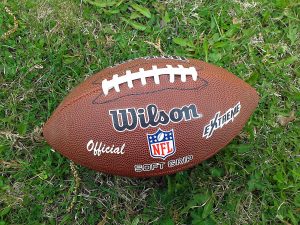
Direct channels allow buyers to purchase directly from the manufacturer. For example, you can purchase Wilson footballs directly from the manufacturer online which cuts out the intermediaries by having the product shipped directly to your door. This arrangement is typically preferred by the manufacturer when control is of the utmost importance despite the higher outlay of resources and increased risk (Rambocas et al. 2015).
Indirect channels allow buyers to purchase goods from a wholesaler or retailer; most commonly physical stores or through websites associated with physical stores. For example, most consumers purchase Wilson footballs through retailers such as Amazon.com, Walmart, and DICK’S Sporting Goods. By definition, for a channel to be considered “indirect,” a product must pass through one or more intermediaries. This arrangement is typically associated with greater short-term profitability, a reduction in outlays for channel structure, and lower risk (Rambocas et al. 2015).
Hybrid (multi) channels allow buyers to purchase both directly from the manufacturer and through a wholesaler or retailer. Wilson Sporting Goods, like most companies, now utilizes this approach. The flexibility of multiple pathways adapts to changing customer needs and buying patterns (Moriarty & Moran 1990). However, one of the biggest challenges both manufacturers and retailers face is whether prices should be the same online as in stores. For example, Apple charges the same online as in physical stores. In contrast, Best Buy tends to be less expensive online when compared to purchasing at its retail locations.
FACTORS INFLUENCING DISTRIBUTION CHANNEL CHOICE
You are probably wondering why companies don’t simply use all distribution channels (i.e., be everywhere the customers are) and call it a day. It’s unfortunately not that simple.
First, not all distribution channels work for all products. For example, perishable products (e.g., meat, poultry, fish, and dairy) and built-to-order products (e.g., custom laptops, bicycles, or suits) are typically not aligned with indirect distribution where direct communication with the manufacturer is key.
Second, the timing of when to use specific distribution channels and the amount of resources allocated to each is context dependent. The movie industry highlights the variety and complexity of options available to production companies when releasing a new movie. Producers can distribute movies through streaming services or through movie theaters but when, where, and how they promote a film depends on their strategy for distributing specific movies to “the right place at the right time for the right customer at the right price” (Coyle 2023; Swamidass 2000).
There are several factors that must be considered when selecting distribution channels: product type; company resources; market environment; and competitor characteristics.
Product type refers to choosing a distribution channel based on the characteristics of the product. Two characteristics in particular, perishability and complexity, tend to have the greatest influence on channel selection. Goods that have a short shelf life (e.g., fresh food) require more direct channels to reach customers more quickly and in good condition. Goods that are more complex (e.g., turbine engines) may also need to leverage more direct channels so that the manufacturer can demonstrate and install the product. In contrast, goods that have a longer shelf life and goods that are less complex can be distributed through indirect channels where the product passes through wholesalers and retailers.
Company resources refer to assets that firms control (e.g., people, equipment, capital, etc.) and can use to achieve its strategic objectives. Two characteristics in particular, financial wherewithal and control, tend to have the greatest influence on channel selection. Companies with deep pockets are more capable of opening their own physical locations to support direct to end customer pathways. For example, Apple has over 500 locations around the world in densely populated areas. Access to greater financial resources also allows for more control through shorter, more direct distribution channels. The more intermediaries involved, the less control over the product and, ultimately, end customer satisfaction.
Market environment refers to the different characteristics that make a specific group of customers attractive to the company. Two characteristics in particular, market size and geographical dispersion, tend to have the greatest influence on channel selection. Smaller markets and markets with buyers concentrated within well-defined areas may be more easily reached through direct channels. In contrast, larger markets where buyers are more spread out may be best served through indirect channels where wholesalers and retailers have better access to, and more experience with, reaching less populated areas.
Competitor characteristics refer to how competition is structured within a specific market. Two characteristics in particular, degree of competition and competitor choice of channels, tend to have the greatest influence on channel selection. The greater the number and intensity of competitors, the more a company may seek to pursue direct channels that provide more control over product quality and sales. Intermediaries who divide their time and effort across multiple competitors may not yield the same results as if the company took full control over their product. In contrast, if the competitors are utilizing certain channels (especially channels through which the end customer has become accustomed to purchasing through), it might make sense for the company to choose the same channels to compete for end customer market share. Alternatively, the company could also choose a different channel to differentiate itself from the competition. For example, Tesla disrupted the traditional automotive sales model of using dealerships through direct distribution via online orders and direct delivery to the residence or business (Asuncion et al. 2023).
MANAGING THE DISTRIBUTION CHANNEL
So, you’ve selected your distribution channel. But the work doesn’t stop there! Now the nitty gritty details become important because you have to handle the complex dynamics of making your distribution channels run smoothly.
Distribution channel management is the process of planning, organizing, and monitoring the various distribution channels used by the company to deliver products to the end customer (Mehta et al. 2002). In plain English, this means to make sure that goods and services are getting to customers in an efficient and cost-effective manner.
There are three steps to success in distribution management:
- Planning. The first step is to develop channel tactics that support both the overall strategy at the corporate level and the marketing mix at the department level. These tactics need to take into account the buying characteristics of the purchaser, the market environment, and allocation of resources (e.g., time, people, and money).
- Organizing. The second step is to choose the various channels to be used and design a structure including the number and type of intermediaries between the manufacturer and end customer. Think of this step as like a blueprint for a house. It’s a guide that can be followed to understand how each element of the channels selected are connected as well as the system for motivating intermediaries to cooperate and sell your product.
- Monitoring. The final step is to make sure that the channel, and its intermediaries, are behaving in accordance with the plan and organization. This means frequently assessing performance throughout the system to ensure that the entire process is operating as efficiently and effectively as possible.
It’s important to note that distribution management also focuses on loss prevention and encompasses all the activities involved in producing and delivering products such as packaging, storage, and transportation. You may also hear the term marketing logistics. Marketing logistics is defined as “planning, implementing and controlling the physical flow of materials and final (finished) goods from the point of origin to the point of use to meet customer requirements at a profit” (Kotler 2024). Distribution channel management oversees the entire process while marketing logistics focuses on the actual movement of materials and goods through that process.
NEW APPROACHES TO DISTRIBUTION CHANNELS
Distribution channels have continually evolved in response to changing market dynamics (forces and factors that affect the behavior and performance of a market) such as technology. This transformation has a huge impact on the way products and services reach consumers, from autonomous drones delivering packages for Amazon Prime Air (https://www.youtube.com/watch?v=ahkeyw-FUlQ) to creating a way for BMW car shoppers to actually be behind the wheel of a moving vehicle while wearing a virtual reality headset that enhances the experience (https://digiday.com/marketing/how-bmw-m-created-a-mixed-reality-where-drive-in-real-life-even-while-wearing-a-vr-headset/).

Disintermediation is an innovative strategy in marketing channels that refers to the process of cutting out the “middlemen” (wholesalers, agents, brokers, and retailers) in an effort to sell directly to customers. Each of these entities or individuals typically acquires legal possession of goods during their physical transfer from manufacturer to the end user. This transfer results in the intermediaries earning a fee or commission in return for their help in getting goods from the seller to the buyer. Disintermediation can both speed up and lower the overall cost of the transaction between buyer and seller; which can then lead to increased profits and better customer experiences.
Digital transformation refers to changes associated with the application of any software, application, or online platform to build a competitive advantage through improved customer experience and lower costs (McKinsey 2023). Historically, most distribution channels were not technology-driven; many of the processes were manual or utilized inexpensive software. But combining digital applications with operational changes can transform the way a company gets its product or service from the producer to the buyer as follows: (1) improve processes and productivity; (2) deliver better customer and employee experiences; (3) manage business risk; (4) control costs; and (5) enhance distribution channel visibility.
Sustainable distribution refers to the process of transporting, storing, and selling products with the lowest possible impact on the ecological and social environment. The impact of distribution channels, particularly the transport and storage of physical goods, on the environment is a legitimate cause for concern. In fact, the transportation sector is responsible for more than a third of global carbon dioxide emissions (IEA 50 2024).
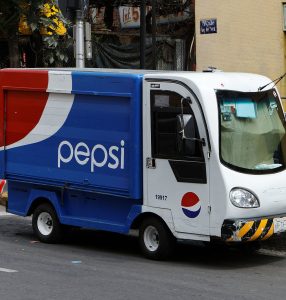 PepsiCo has publicly committed to decarbonize their fleet operations by: (1) improving the efficiency of their vehicles, routing, and driving; (2) using cleaner fuels; and (3) transitioning to zero-emission vehicles (https://www.pepsico.com/our-impact/esg-topics-a-z/fleet-decarbonization). For example, the company is testing out electric vehicles out of its Sacramento, California, distribution center. Pepsi is running 21 Tesla Semis up to 450 miles a day on regional long-haul routes (https://www.youtube.com/watch?v=z-P6uhbTU38).
PepsiCo has publicly committed to decarbonize their fleet operations by: (1) improving the efficiency of their vehicles, routing, and driving; (2) using cleaner fuels; and (3) transitioning to zero-emission vehicles (https://www.pepsico.com/our-impact/esg-topics-a-z/fleet-decarbonization). For example, the company is testing out electric vehicles out of its Sacramento, California, distribution center. Pepsi is running 21 Tesla Semis up to 450 miles a day on regional long-haul routes (https://www.youtube.com/watch?v=z-P6uhbTU38).
 Disney is another example of a company whose environmental goals extend to its distribution channels. Magic Kingdom at Walt Disney World, Florida, is the world’s most sustainable amusement park (Uswitch.com 2020). The company has integrated a wide range of eco-friendly practices into their delivery of fun and memorable customer experiences such as powering their facilities from a 270-acre, 57-megawatt solar facility and eliminating single-use plastic straws and plastic lids.
Disney is another example of a company whose environmental goals extend to its distribution channels. Magic Kingdom at Walt Disney World, Florida, is the world’s most sustainable amusement park (Uswitch.com 2020). The company has integrated a wide range of eco-friendly practices into their delivery of fun and memorable customer experiences such as powering their facilities from a 270-acre, 57-megawatt solar facility and eliminating single-use plastic straws and plastic lids.
SUMMARY
To briefly review what was discussed in the chapter, we began by defining what a distribution channel is. Then we highlighted the importance of supply chains, and how distribution channels are a part of them. Following this we talked about the intermediaries in distribution channels: producers, wholesalers, retailers, and end customers. After this we looked at the distinction between push strategies and pull strategies. The ways distribution channels interact with the other parts of the 4Ps of the marketing mix, like Price and Promotion were described. Next, the three types of distribution channels, namely direct, indirect, and hybrid were introduced. Following this, we pivoted to the factors that impact distribution channel choice: these factors were product type, company resources, market environment, and competitor characteristics. Then, the steps for success in distribution management of planning, organizing, and monitoring were discussed. Last, we touched on new approaches to distribution channels, like disintermediation, digital transformation, and sustainable distribution.
REFERENCES
Belin, Howard. Branding and Marketing Channel Strategies: Some Effects on Channel Partners. Journal of Marketing Channels, 23, 255-257. 2016.
Palmatier, Robert W., Louis W. Stern, Adel I. El-Ansary and Erin Anderson. Marketing Channel Strategy, 8th ed.Upper Saddle River, NJ: Pearson Prentice Hall. 2014.
Thiel, Peter. Zero to One: Notes on Startups or How to Build the Future. New York: Crown Business. 2020.
Association for Supply Chain Management. https://www.ascm.org/membership-community/career-resources/supply-chain-management-careers/). 2024.
Manufacturing & Technology Enterprise Center. https://mfgtec.org/supply-chain-explained. 2024.
McKinsey. https://www.mckinsey.com/featured-insights/mckinsey-explainers/what-is-supply-chain. 2022.
Mentzer, John T., William DeWitt, James S. Keebler, Soonhong Min, Nancy W. Nix, Carlo D. Smith, and Zach G. Zacharia. Defining Supply Chain Management. Journal of Business Logistics, 22 (2), 1-25.
Gadde, L.-E. Distribution network dynamics and the consequences for intermediaries. Industrial Marketing Management, 43(4), 622–629. 2014.
CNN. https://www.cnn.com/2022/11/14/business/jeff-bezos-charity/index.html. 2022.
Ng, T.W., and William Chung. The Roles of Distributor in the Supply Chain–Push-Pull Boundary. International Journal of Business Management, 3, 2839. 2008.
NPR. https://www.npr.org/2018/11/21/660168325/optimized-prime-how-ai-and-anticipation-power-amazons-1-hour-deliveries. 2018.
Pyke, D.F. and Cohen, M.A. “Push and pull in manufacturing and distribution systems”, Journal of Operations Management, Vol. 9 No. 1, pp. 24-43, doi: 10.1016/0272-6963(90)90144-3. 1990.
Haron, A. J. Factors influencing pricing decisions. International Journal of Economics & Management Sciences, 05(01), 1–4. https://doi.org/10.4172/2162-6359.1000312. 2016.
Moriarty, R.T., and Moran, U. Managing hybrid marketing systems. Harvard Business Review 68 (6), 146–155. 1990.
Rambocas, Meena, Raquel Meneses, Carlos Monteiro, and Pedro Quelhas Brito. Direct or indirect channel structures. Evaluating the impact of channel governance structure on export performance. International Business Review, 24, 124-132. 2015.
Asuncion et al. Benefits and Effects of Tesla’s Direct-to-Customer Sales Model. Proceedings of the 6th European Conference on Industrial Engineering and Operations Management Lisbon, Portugal, July 18-20, 2023. https://ieomsociety.org/proceedings/2023lisbon/471.pdf. 2023.
Coyle, Jake. Movie Theaters and Streamers May End Up Friends, After All. Associated Press. https://apnews.com/article/movies-streaming-theaters-affleck-scorsese-a39d060d7b8e23bf27524f09e57d73d5. 2023.
Swamidass, P. M. Seven “Rights” of Logistics . In: Swamidass, P.M. (eds) Encyclopedia of Production and Manufacturing Management. Springer, Boston, MA . https://doi.org/10.1007/1-4020-0612-8_871. 2000.
Kotler, Philip, Kevin Lane Keller, and Alexander Chernev. Marketing Management, 16th Edition. London, England: Pearson. 2024.
Mehta, Rajiv, Alan J. Dubinsky, and Rolph E. Anderson. Marketing Channel Management and the Sales Manager. Industrial Marketing Management, 31 (5), 429-439. 2002.
IEA 50. https://www.iea.org/energy-system/transport. 2024.
McKinsey. https://www.mckinsey.com/featured-insights/mckinsey-explainers/what-is-digital-transformation. 2023.
Uswitch.com. https://www.uswitch.com/gas-electricity/eco-attraction-index. 2020.
Media Attributions
- 9
- Amazon eCom Jeff Bezos by Stock Catalog, licensed under CC BY 2.0
- Fig by Z. Farley
- Lumberjack Cutting Tree in Forest by Industrial Photograph, licensed under Canva Pro license. Pine Logs on a truck in Burns, Oregon and The Rock-Tenn Factory in Panama City via GoodFreePhotos, licensed under CC0 Public Domain. The tree truck by Justin Russell, licensed under CC BY 2.0.
- Packaging Factory via RawPixel & Packing Crates to be Picked up via Public Domain Pictures.net licensed under CC0 Public Domain. Handing a package over for delivery by the BagandBox, licensed under CC BY 2.0.
- Factory Smoke via RawPixel, licensed under CC0 Public Domain. Nagoya City North Wholesale Market by 円周率3パーセント, licensed under Creative Commons Attribution-Share Alike 4.0 International. Tractor Supply entrance by Sherman40336, licensed under Creative Commons Attribution-Share Alike 4.0 International. 20230505-FNS-UNK-0039 by USDA, licensed under Public Domain Work.
- Amazon fulfillment center by Tedder, licensed under Creative Commons Attribution-Share Alike 4.0 International license
- UPS Package car by Jason Vogel, licensed under Creative Commons Attribution-Share Alike 4.0 International
- Phenom 300 by Jessica Bowling, licensed under Creative Commons Attribution-Share Alike 4.0 International license
- American Football by Petey21, licensed under Creative Commons CC0 1.0 Universal Public Domain Dedication
- Amazon prime Air by William Warby, licensed under CC BY 2.0
- Pepsi Delivery by Pierre-Yves Beaudouin via Wikimedia Commons, licensed under CC BY-SA 4.0
- Cinderella Castle by Jedi94, licensed under Creative Commons Attribution-Share Alike 4.0 International
“A set of interdependent organizations involved in the process of making a product or service available for use or consumption” (Palmatier et al. 2014, p. 3) by an end user
“A set of three or more entities (organizations or individuals) directly involved in [both] the upstream and downstream flows of products, services, finances, and/or information from a source to a customer” (Mentzer et al. 2001, p. 4; see Fig. TBD)
Manufacturers or service providers that combine labor and capital to create goods and services for customers
Resellers who buy goods in large quantities and resell them to retailers and other businesses
Retailers purchase a variety of goods from either producers or wholesalers and then sell those goods, in smaller quantities, directly to the end customer
The final purchasers of goods and services
Distributors that never take possession of the good or service but earn monetary commissions or fees for facilitating sales between producers and end customers
A famous, albeit oversimplified, depiction of two different strategic approaches to managing the flow of goods and services in the distribution channel
Focuses on forecast-driven planning where demand for goods and services are anticipated and produced in advance to meet that demand (Ng & Chung 2008)
Focuses on producing goods and services in direct response to current orders which reflect actual demand (Ng & Chung 2008)
A high-level view of a situation or problem
One of the three types of distribution channels. Allow buyers to purchase directly from the manufacturer
One of the three types of distribution channels. Allow buyers to purchase goods from a wholesaler or retailer; most commonly physical stores or through websites associated with physical stores
One of the three types of distribution channels. Allow buyers to purchase both directly from the manufacturer and through a wholesaler or retailer
Choosing a distribution channel based on the characteristics of the product
Assets that firms control (e.g., people, equipment, capital, etc.) and can use to achieve its strategic objectives
The different characteristics that make a specific group of customers attractive to the company
How competition is structured within a specific market
The process of planning, organizing, and monitoring the various distribution channels used by the company to deliver products to the end customer
The first step to success in distribution management. Develop channel tactics that support both the overall strategy at the corporate level and the marketing mix at the department level
The second step to success in distribution management. Choose the various channels to be used and design a structure including the number and type of intermediaries between the manufacturer and end customer
The third and final step to success in distribution management. Make sure that the channel, and its intermediaries, are behaving in accordance with the plan and organization
"Planning, implementing and controlling the physical flow of materials and final (finished) goods from the point of origin to the point of use to meet customer requirements at a profit” (Kotler 2024)
Forces and factors that affect the behavior and performance of a market
An innovative strategy in marketing channels that refers to the process of cutting out the “middlemen” (wholesalers, agents, brokers, and retailers) in an effort to sell directly to customers
Changes associated with the application of any software, application, or online platform to build a competitive advantage through improved customer experience and lower costs (McKinsey 2023)
The process of transporting, storing, and selling products with the lowest possible impact on the ecological and social environment
